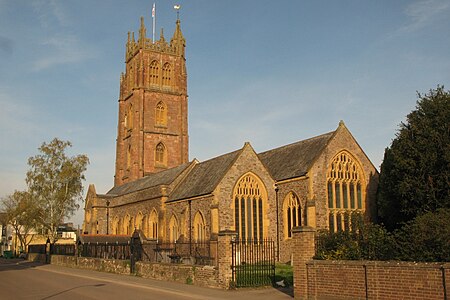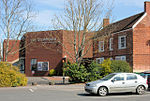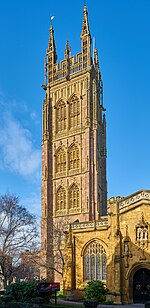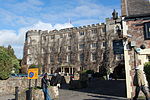Church of St. James, Taunton

The Church of St James is a Church of England parish church in Taunton, Somerset, England. It dates from the early 14th century, although an earlier church, associated with Taunton Priory, was located on the same site in the 10th century. The church is dedicated to St. James the Greater. It is a Grade II* listed building.The church backs onto the Somerset County Ground and forms a familiar backdrop to the Cricket ground. The waggon roof above the nave and north aisle is medieval. The south aisle and the south porch were rebuilt between 1836 and 1837, with the 111 feet (34 m) west tower following in the 1870s and the chancel being rebuilt in 1884. The font dates from the 15th century and the pulpit from 1633. There are fragments of 15th century stained glass in the West end. Other stained glass is from Clayton and Bell in the 19th century.The iron railings around the churchyard are from the early 19th century.The parish is part of Diocese of Bath and Wells.
Excerpt from the Wikipedia article Church of St. James, Taunton (License: CC BY-SA 3.0, Authors, Images).Church of St. James, Taunton
St James Street,
Geographical coordinates (GPS) Address Nearby Places Show on map
Geographical coordinates (GPS)
| Latitude | Longitude |
|---|---|
| N 51.018 ° | E -3.101 ° |
Address
St James Street
TA1 1JR , Firepool
England, United Kingdom
Open on Google Maps










